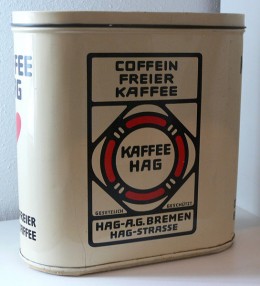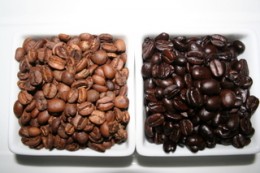
Source
Misconceptions of a Bean
Decaffeinated coffee is consumed by the elderly, children, and those who are pregnant as well as by individuals with hypertension, anxiety disorders, or kidney disease. And it is becoming only more and more popular among the population at large. Those who drink it believe that they are avoiding caffeine and its effects with beverages containing only coffee flavoring, and that these drinks are free of harmful coffee-related substances. This is simply not the case. In fact, many decaffinated beverages not only contain caffeine but are also contaminated with left over processing chemicals.
In the interest of protecting those whose health may be most affected by its consumption, namely the old, the young, the health-compromised, and the pregnant, this article will go into an in-depth analysis of the potential harms of decaffeinated coffee.

Source
An Introduction: What Decaffeination Really Means
First of all, decaffeinated coffee isnot always caffeine-free. It does usually contain less of the chemical, but just how much less varies by establishment and even within establishment, based on who is doing the brewing and the technique used.
A group of University of Florida researchers conducted an experiment to test and compare this caffeine variability. First, they analyzed decaffeinated drip-brewed beverages from ten national coffee chains or locally-based shops, and then they followed this with an analysis of decaffeinated espresso shots and decaffeinated brewed coffees from a single Starbucks store (1).
Every drip-brewed drink, except for decaffeinated instant Folgers crystals, had caffeine. Amounts ranged from over 8 to almost 14 milligrams, though this is substantially less than the 170 milligrams usually found in the same-sized, caffeinated, drip-brewed counterpart (1). The espresso shots contained between 3 to 15.8 milligrams, and the brewed coffees had from 12 to 13.4 milligrams of caffeine each (1).
While, again, these amounts may seem low, Mark S. Gold, M.D., an author of the Florida study, finds that plentiful and frequent consumption of decaf coffee could conceivably render one dependent on the substance and could even be potentially dangerous for those with doctor-imposed caffeine-free lifestyles (1).
Further, studies of the effects of caffeine on very susceptible individuals have shown a dose as low as 10 milligrams can be problematic; over 30 percent of those studied found levels of 18 milligrams or lower to have undesirable effects (1). And although most individuals probably do not consume as many as 10 decaffeinated cups of coffee a day, doing so would be near the equivalent of a normal caffeine-full cup, with all the accompanying side effects of caffeine in addition to others that may be much more harmful.
These more harmful effects are caused by the decaffeination process itself. Described below are five ways in which caffeine can be removed from coffee beans. Some have greater health risks than others. A few are considered safe.

Source
The Roselius process—RISKY
The Roselius process was co-invented by Germans Ludwig Roselius and Karl Wimmer back in the early 1900s. This process requires steaming beans in a saline solution and then removing caffeine with the addition of the chemicalbenzene. This decaffeinated coffee product was sold in Europe and the US by Kaffee HAG and Sankra, brands now a part of the Kraft Foods conglomerate. Fortunately, HAG and Sankra now use other decaffination processes and no longer utilize benzene due to safety concerns.
According to the Occupational Safety and Health Administration (OSHA), benzene is produced as a by-product of reactions involving coal and petroleum and is used to manufacture pesticides and detergents (3). The Delaware Health and Social Services (DHSS) finds the short-term results from drinking large quantities of benzene to be similar to those from breathing it (lightheadedness, confusion, irregular heart beat, upset stomach) (8). The OSHA has found even more serious short-term effects from high benzene exposure, including loss of consciousness and death (3). And although the long-term affects from drinking benzene are unknown, ingesting benzene (such as in drinking water) has been equated with dangerous exposue to a potential carcinogen (8).
The Direct method— RISKY
This process entails steaming beans for half an hour and then covering them with one of two chemicals: dichloromethane or ethyl acetate. These chemicals are mostly removed by draining and additional steaming, but residue remains in the final product.
Dichloromethane is defined by the Occupational Safety and Health Administration as a potential occupational carcinogen when inhaled or absorbed through the skin (4) and ingestion, as well as inhalation, has been linked to narcosis and blood irregularities (5).
The FDA imposes regulations on the coffee industry, ensuring the chemical is not present in excess of 10 parts per million (7) due to safety concerns. However, the EPA’s maximum level of dichloromethane allowed in drinking water is only 5 parts per billion (10). Although the National Coffee Association states that most companies using this process maintain levels as low as 5 parts per million in their products (lower than the FDA-imposed maximum), this is still substantially higher than the EPA imposed maximum allowed in the water we drink.
As for the second chemical typically used in this process, ethyl acetate, its use is also not without health concerns. Ethyl acetate is naturally found in fruits; however, the type added to beans in the decaffeination process is often a synthetic version. Ethyl acetate has been shown to be toxic in amounts of 5620 mg/kg when provided to rats and may cause gastrointestinal irritation when ingested that can worsen liver or kidney disorders (11).
The Indirect method—RISKY
This process involves the same chemicals as the direct method (dichloromethane and ethyl acetate) but they are added to hot water in which coffee beans have been soaked instead of to the beans themselves.
The indirect method may be confusingly labeled as “water-processed”, and it doesuse water, but such labeling allows customers to believe it is chemical-free, when in fact it is not.

Source
To find a store where Swiss Water decaffeinated coffee is sold near you go to http://www.swisswater.com/findand type in your country and zip code.
The Swiss Water process—SAFE
The Swiss Water Process was developed in Switzerland in the 1900s, around a quarter of a century after the advent of the German Roselius process, by the Swiss Water Decaffeinated Coffee Company.
It involves soaking beans in hot water, thereby releasing their caffeine content and flavor, and then passing the water and beans through a carbon filter, trapping caffeine but leaving the coffee flavoring in the liquid. The original beans are discarded. More beans are added to this virtually caffeine-free, flavor-rich liquid which readily absorbs caffeine but allows them to retain their flavor, as the liquid is already saturated with flavoring. Constant filtration eliminates caffeine.
For those who do not have to worry about residual caffeine in their coffee, this process is considered safe. No chemicals are added.
The CO2 process—SAFE
The CO2 process removes caffeine from steamed beans using carbon dioxide under highly pressurized conditions (in which the gas becomes a liquid). Pressure is then either brought down, enabling the carbon dioxide to evaporate and carry away the caffeine in the process, or still-pressurized gasses are exposed to water or to charcoal filters which separate out the caffeine.
For those who do not have to worry about residual caffeine in their coffee, this process is considered safe. No chemicals are added.

Source
The Robusta Bean—
In addition to containing caffeine and potentially being laced with chemical additives, there are other concerns that must be taken into account when discussing the consumption of decaf coffee. These are the effects caused by the bean used in the decaffeinating process: the Robusta bean.
Many companies use Robusta beans in their decaffeinated products and Arabica beans in their caffeinated ones. In comparison to Arabica, Robusta beans have a higher acidity and contain more diterpene fats (14). These beans’ higher acid content has been linked to digestive disorders, peptic ulcers, and heartburn (14). Their fat content is associated with elevated liver enzymes as well as triglycerides, potentially endangering those predisposed to or suffering from liver disorders or heart disease (14).
An additional warning to those with heart disease or risk factors, such as high cholesterol levels:
According to a study funded by the National Institutes of Health, fatty acids used to produce LDL (the bad cholesterol) and ApoBproteins that attach to LDL both rose in groups of individuals drinking three to six cups of decaffeinated coffee a day over a three month period (13).
Interestingly, for individuals with a BMI measured at 25 or greater, decaffeinated coffee increased good cholesterol (HDL) by 50% (13). However, for those who were not overweight, these levels instead dropped by 30% (13).
Conclusion
In conclusion, decaf does not mean safe. It also does not necessarily mean unsafe for those without health conditions or concerns.
There are much lower amounts of caffeine in decaffinated products, but these lower amounts may still be problematic for some, and the higher acidity and fat content of the Robusta bean may be reason for certain individuals to discontinue drinking decaffinated beverages. Most everyone should want to avoid processes that contain chemical additives, and fortunately superior and chemical-free options are available.
There has been research done to genetically engineer caffeine-free coffee plants which could solve many of these problems. As of yet, though, these beans are not readily available on the market.
Article Source:http://hubpages.com/health/The-Deadly-Coffee-Bean